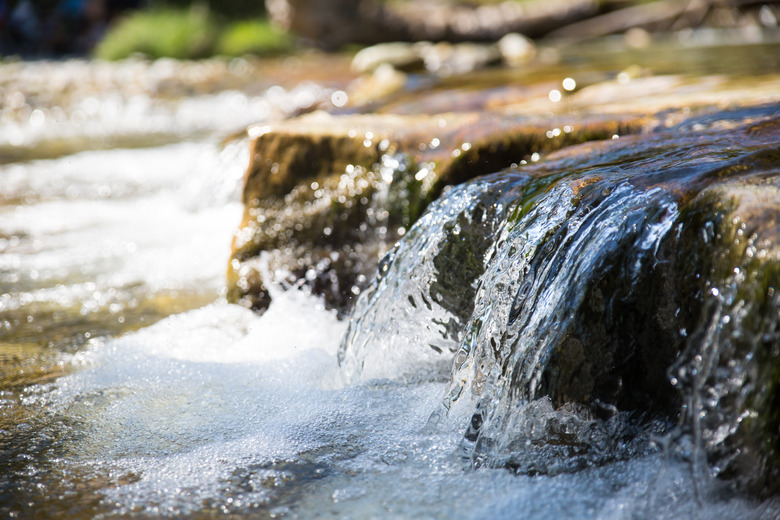Difference Between Fluid And Liquid
At first blush, the terms "fluid" and "liquid" seem to describe the same thing. However, an important difference exists between them; liquid describes a state of matter–as do "solid" and "gaseous"–whereas a fluid is any substance that flows. Nitrogen gas, for example, is a fluid, whereas orange juice is both a liquid and a fluid. The distinction is useful for scientists and engineers who want to thoroughly understand how matter works.
About Fluids
About Fluids
Scientists have developed precise definitions describing what they mean when they talk about fluids; this is necessary to avoid confusion. A fluid is a substance that lacks rigidity; it can flow from place to place and through holes or gaps in containers. Fluids also have viscosity, or "thickness." Liquid water, for example, has much lower viscosity than honey or tar, and the thickness of a given substance is consistent. Jelly is an unusual fluid because its thickness depends on how hard you stir it.
About Liquids
About Liquids
Liquid is the state of matter of a substance at temperatures and pressures intermediate between those of its solid and gas forms. It has no definite form and assumes the shape of any container that holds it; however, if the container's volume is greater than the liquid's, the liquid does not expand to fill the whole space, as a gas does. Like solids and unlike gases, liquids are relatively incompressible; that is, squeezing them does not make them smaller in volume.
Cite This Article
MLA
Papiewski, John. "Difference Between Fluid And Liquid" sciencing.com, https://www.sciencing.com/difference-between-fluid-liquid-5752203/. 13 March 2018.
APA
Papiewski, John. (2018, March 13). Difference Between Fluid And Liquid. sciencing.com. Retrieved from https://www.sciencing.com/difference-between-fluid-liquid-5752203/
Chicago
Papiewski, John. Difference Between Fluid And Liquid last modified March 24, 2022. https://www.sciencing.com/difference-between-fluid-liquid-5752203/
